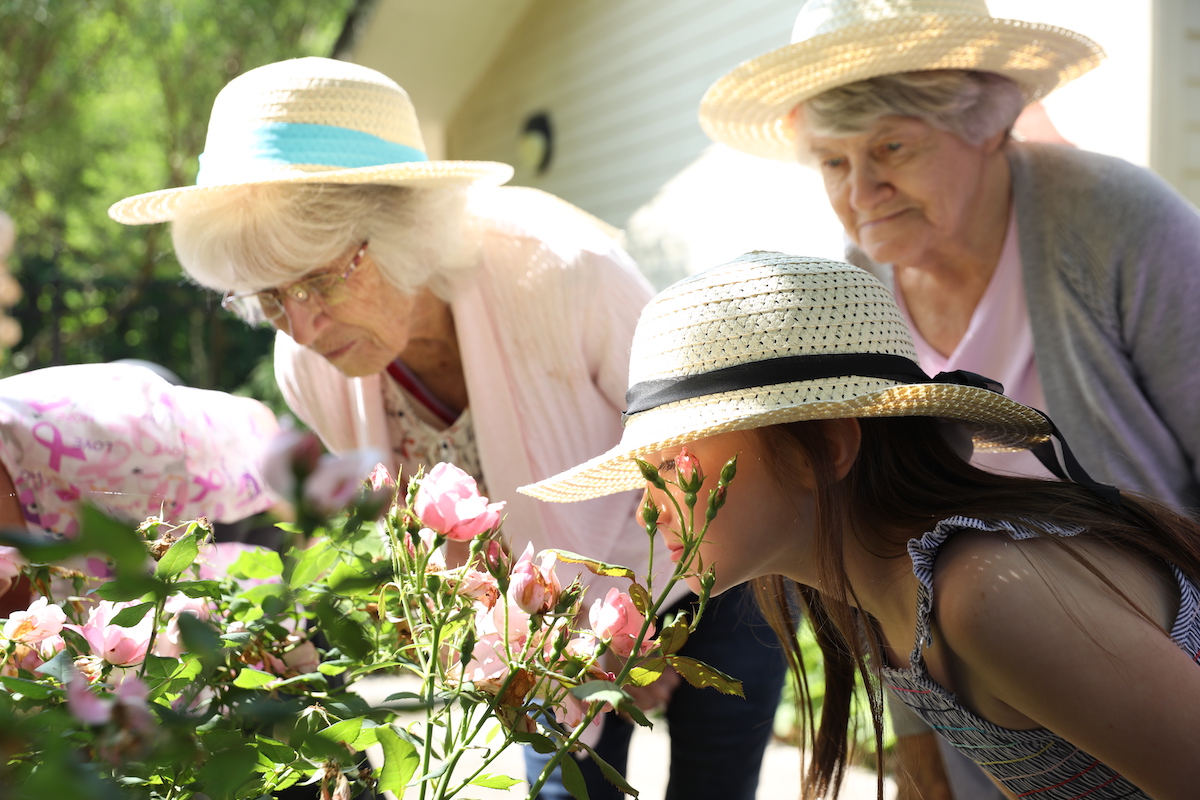How to Design a Sensory Garden for a Loved One Living with Dementia

Spending time in nature and gardening provide wellness benefits for all of us. However, designing and planting a sensory garden goes a step further in offering benefits for individuals living with dementia.
What is a sensory garden? According to Homes and Gardens, “sensory gardens are intimate outdoor spaces filled with enticing sounds, scents and textures, designed to delight. All gardens provide sensory experiences, but garden ideas with sensory at their heart will have a concentration of different elements that stimulate the five basic senses of sight, sound, touch, smell, and taste.”
Spending time in a sensory garden is beneficial for individuals living with dementia because it helps them stay in the moment. Studies have shown that sensory stimulation can be helpful in treating memory issues, offering different ways to communicate and express emotion. As a result, this can improve mood, self-esteem, and overall well-being.
At Uplands Village, our life plan community sits on a 500-acre campus in Pleasant Hill, Tennessee, offering ample opportunities for individuals to experience sensory stimulation through nature. Below, our team is sharing tips on creating your own sensory garden!
Sensory Stimulation: Sight
The point of a sensory garden is to stimulate all five senses, but you really have the power to make a significant impact through the sense of sight.
From using colors to elicit different moods and choosing certain plants to attract wildlife, such as butterflies, to using a variety of plant shapes or implementing sculptures into the hardscape, what you can do visually in your sensory garden is limitless.
PennState Extension states, “contrasting elements of color, form, movement, light, and shadow add to our sensory experience when we look at a beautiful garden. Red, orange, and yellow are warm colors that promote activity. Cool colors such as blue, purple, and white encourage tranquility.”
A few plant suggestions include:
- Bleeding Heart – white, pink, or red flowers that look like downward-facing hearts
- Butterfly Weed – bright yellow flowers that are a primary food source for butterflies
- Delphinium – tall spikes of flowers appearing in either white, pink, lavender, blue, purple, or multi-toned
Sensory Stimulation: Sound
You will experience the relaxing sounds of nature by simply spending time outside, but you can be more intentional with sound in your sensory garden. For example, you will likely hear birds chirping and bees buzzing, but if you add a water feature such as a small fountain or bird bath, you will be able to listen to the tranquil sound of water.
Additionally, you can add wind chimes to your sensory garden or include plants that make noise when they bloom, or the wind blows through them. A few examples include:
- Switchgrass – ornamental grass that makes noise when the wind blows through its tall stem
- Balloon Flower – a blue-violet flower that makes a popping noise when its “inflated” buds are squeezed
- False Indigo – indigo-blue flowers with seed pods that rattle when they shake
Sensory Stimulation: Touch
When considering elements that stimulate the sense of touch in your sensory garden, think about texture. For example, the cold stone of a bench, moss that springs when you step on it, or a soft flower all present different textures. One example of a touch-stimulating plant is Lamb’s Ear, a ground-covering plant with thick and fuzzy foliage.
Sensory Stimulation: Smell
It is a given that flowers and plants give off a variety of aromas. However, there are some particularly potent flowers that you can include in your sensory garden to stimulate the sense of smell.
Be strategic with your placement, though. “Don’t overwhelm by placing fragrant blooms too close together; space them out at intervals around your garden (PennState Extension).”
Some fragrant flower options include:
Sensory Stimulation: Taste
Due to the impact of dementia on a person’s decision-making and judgment skills, it’s a good idea to only plant non-toxic flowers and plants in your sensory garden. With this being said, you can also include plants that are meant to be eaten, such as various herbs, vegetables, and fruits. Make sure to designate a specific area of your garden for edible plants to avoid confusion.
There are many ways you can create an impactful sensory garden for your loved one living with dementia. Fortunately, however you choose to design it, you and your loved one will reap the benefits!
Uplands Village’s life plan community presents endless opportunities for those living with dementia to safely explore nature and garden. If you would like to learn more about our memory care services, we encourage you to visit our website or contact a member of our team.
